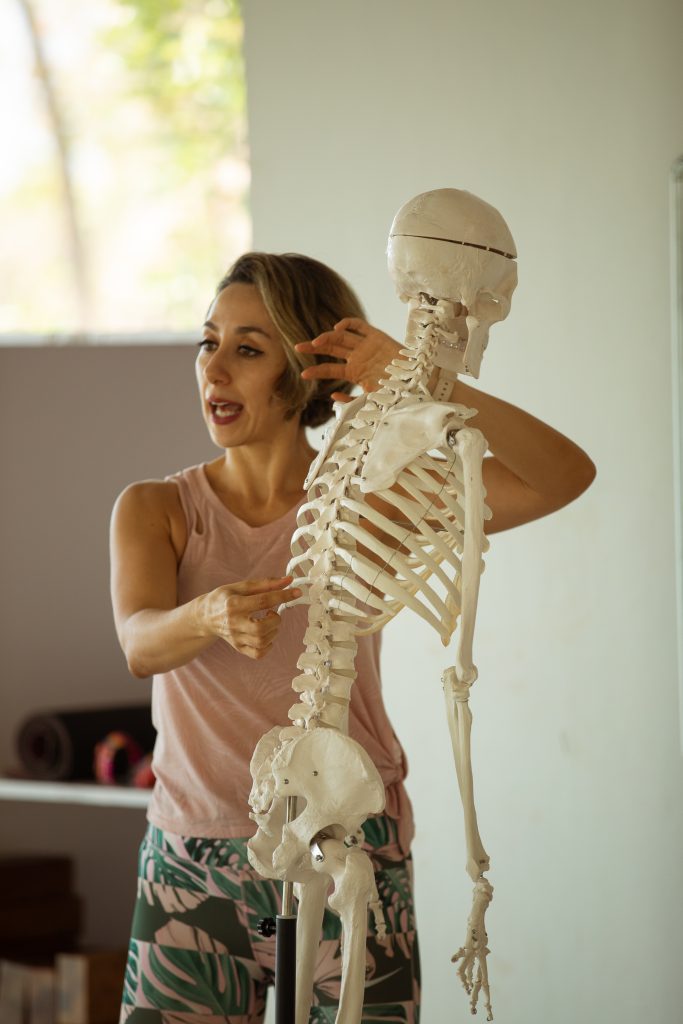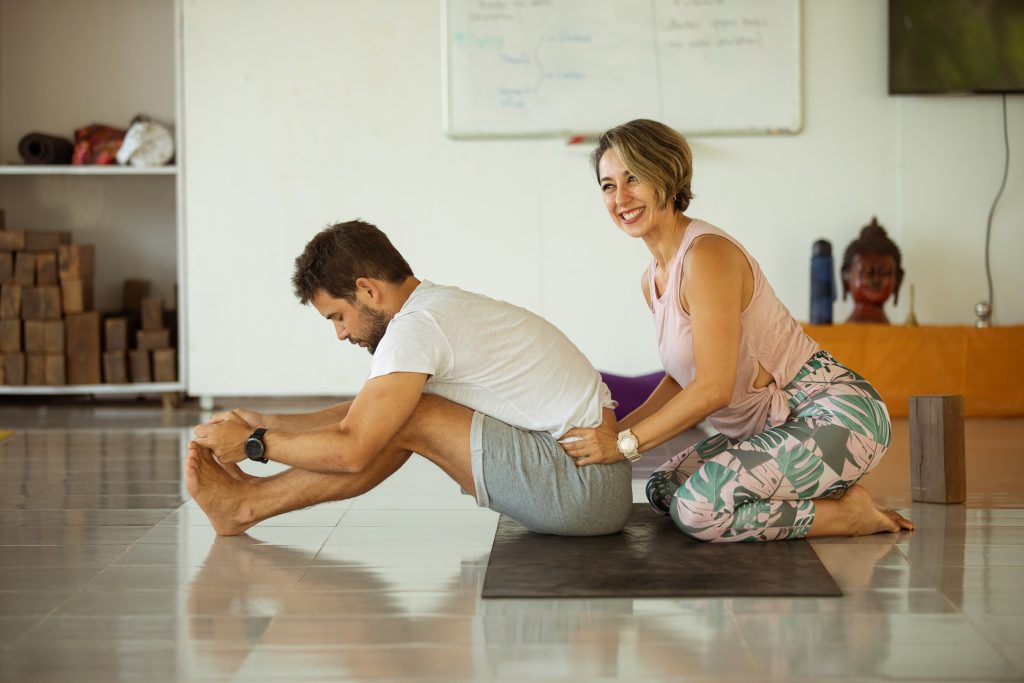Experiential Anatomy as Yoga Therapy
The human body is an amazing structure that performs numerous functions every second. Each part of the body is responsible for their own functions, and yet they all work together seamlessly giving us the capability to do wonderful things everyday. But we take our systems for granted by overlooking the significance of a mind-body connection and awareness. We make mindless decisions, get habituated with incorrect postures, eating habits and more. How can we correct this? That’s where yoga and experiential anatomy come in and helps us overturn patterns, perceptions and habits.

Experiential anatomy and yoga practice go hand-in-hand. Learning experiential anatomy gives you a feel of your whole body in a yoga posture and between movements. We all know various organs and structures exist within us. But how many of us can really feel the liver, heart or bones as an actual part of us? When you learn experiential anatomy (through books, an actual skeleton, models or applying what you learn in a 200hr YTTC to your personal practice) you get a felt sense of your body that allows you to experience anatomical structures, functions, connections and interdependencies between various body parts. With practice, over time, you form a dynamic, friendly interconnection between your body and mind. You understand the value of every movement and decision you make. When performing yoga asanas and teaching your students, this knowledge and experience plays an integral role in alignment, modifications, benefits and contraindications. Furthermore, you can use experiential anatomy as yoga therapy practices that can assist students in overcoming different conditions and recovery. Let us get a better understanding of what is experiential anatomy.
Experiential Anatomy for Yoga Teachers
Experiential anatomy involves getting a sense or feel of all the layers of your being. When compared to yogic concepts, this is the Panch Kosha (five layers or five sheaths) philosophy. When you work on one layer, all layers are impacted. In an experiential yoga anatomy course you will learn about the base of your structure, that is, the bones, and how the skeletal system can create a strong, stable and comfortable base (as Maharishi Patanjali said, “Sthiram Sukam Asanam”, which means to be steady and comfortable in any posture). When you understand this base and how it is structured, you will realize more about stability in different yoga postures. With time, as you become more mindful, you will learn to draw the connection between movements and during your regular standing, sitting or walking posture. You will also realize how your anatomy impacts this and vice versa.
Experiential anatomy enables practitioners to break old patterns and prevent the repetition of unhealthy habits, postures, movements and alignment (in everyday life and in yoga asanas). It acts as a wonderful healing practice, especially in yoga therapy. Practitioners learn to honor their body, embrace their structure and feel more connected.
Another aspect of experiential anatomy is that while you understand parts of the system and their structure, you will also begin to see the body as a whole. You will learn about the fascia, and how this web binds your body together. So, while you feel like you have tight hamstrings, it could also be your lower back that is lacking in flexibility. Understanding the body as different parts and as a whole will enable you to feel deeply and work on each aspect in the right way. Taking it a step further with a yoga anatomy course, you will even be able to apply this when teaching students. Imagine applying this mindfulness and learning to listen to your body during postures and in everyday life – what wonders this will do for yours and your students health and well-being!
Learn more about the Fascia and Connective Tissue here.

What are the Steps Involved in Learning Experiential Anatomy?
- Understand experiential anatomy: The first step is understanding what experiential anatomy is. An introduction to the concept will give you an understanding of how the body is structured and how the body shapes movement from inside out. Moreover, you will understand what happens within the connective tissue, organs, system and structure during a yoga posture. A good yoga anatomy course will help you learn and understand this either through actual models or books and lectures.
- Experience it: Once this understanding is in place, with awareness you will be able to get a feel of the transformation within your body during a posture or movement. You will be capable of cultivating kinaesthetic awareness of the structure. This awareness will equip you to focus the mind on different aspects of the structure during a movement. You might even be able to use imagery, move in healthier ways, correct your sitting, standing or walking posture, among others. Every movement will become more mindful, slow and gentle. This realization will allow you to experience your own body in a profound way.
- Apply experiential anatomy: When you approach this step, you will be able to apply your experience when you are doing yoga asanas and while teaching your students. When practiced over time, stored memories and energy in the connective tissue and muscles are released and space is made for new ones. The nervous system will learn new ways of organizing movement that are functional, safe and healthy. You will be able to apply experiential anatomy as yoga therapy to guide students as they heal or recover from ailments or injuries. Fears that might be stored from past incidents get released. This deliberate focus on parts of the structure and anatomy, while also maintaining awareness of the whole, empowers practitioners to make mindful, informed decisions that strengthen the system, bring more comfort and stability (Sthiram).
In Conclusion
To apply and teach experiential anatomy effectively, the key is to feel it yourself and speak from experience. If you take up a yoga anatomy course, you will learn to incorporate the new learning into yoga practices and involve the body, breath and mind. You will even mindfully incorporate it into functional everyday movements. Unconscious and subconscious movements become conscious and deliberate, rewriting memories and habits already stored. This learning and experience will help you teach your students more effectively and confidently.
Contact us if you are interested in learning more about the functional anatomy and discover how it can make you a better yoga teacher. At Sampoorna Yoga Online Academy, you will find specialized help focusing on your well-being and expanding your knowledge of yoga, no matter where you are.


